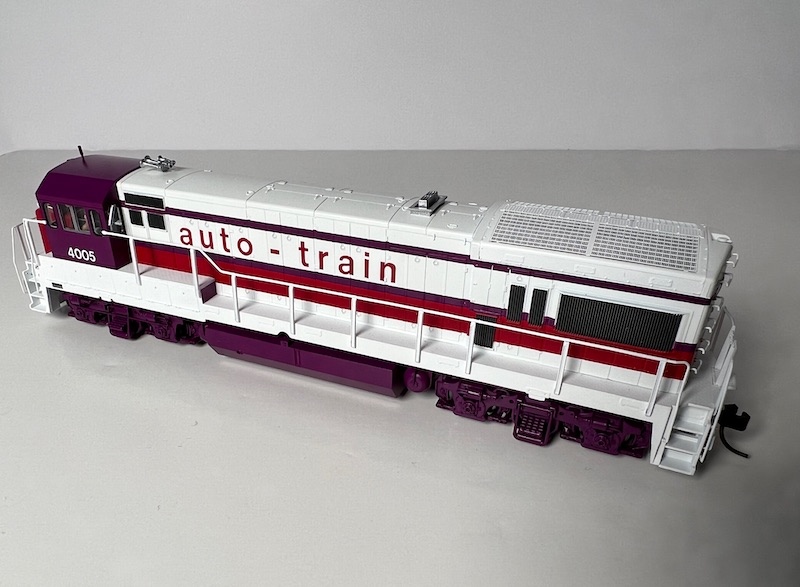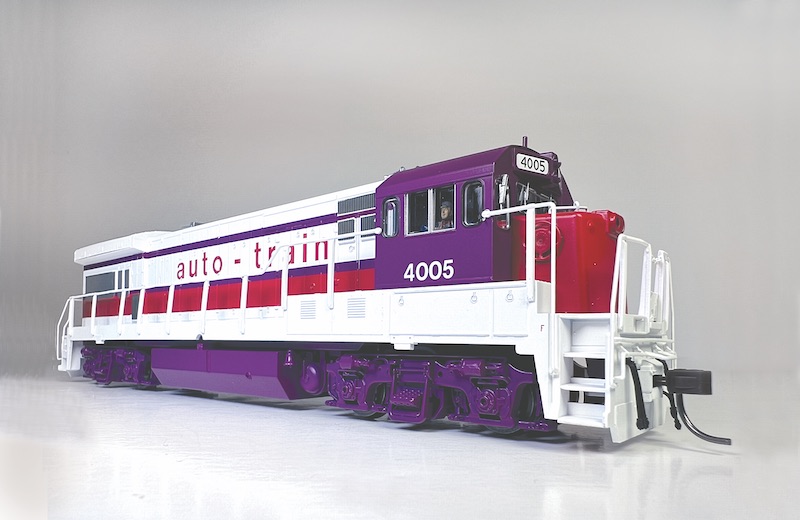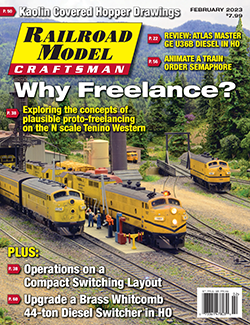 Review by Harry K. Wong/photos by the author
Review by Harry K. Wong/photos by the author
Ever since diesel-electric locomotives first entered main line service in North America, manufacturers have been locked into a horsepower race that did not let up until the mid-1970s. From 1966 through 1970, this competition reached a crescendo, with the most powerful examples of the time released during this period. Electro-Motive topped the charts with its eight-axle 6,600hp DDA40X and the six-axle C-C 4,200hp SD45X. In the four-axle road locomotive category, General Electric outshone its competitors with the 3,600hp U36B. With the exception of the DDA40X whose output rating still stands unchallenged today, these horsepower numbers were not eclipsed until the 1980s and 1990s. High-horsepower locomotives such as these were intended primarily for expedited movement of high-priority freight and intermodal traffic.
General Electric’s four-motor, four-axle 3,600hp U36B was the logical progression from its 3,300hp predecessor — the U33B — both of which were produced alongside the conservatively rated 3,000hp U30B. With their higher horsepower ratings, both the U33B and U36B were fitted with a larger and wider radiator section compared to the U30B. This larger radiator section extended out above the side walkways, creating a “batwing” appearance.

Auto-Train U36B 4008. Photo by Paul E. Defries. White River Productions Collection.
Between September 1967 and June 1970, 137 U33Bs were produced at GE’s plant in Erie, Pa. New York Central received two, Penn Central 81 units, 25 units to Rock Island, and 29 U33Bs to Seaboard Coast Line. The U36B immediately followed in May 1970, with examples produced through December 1974. A total of 125 U36Bs were built for two primary customers; with 108 delivered to Seaboard Coast Line, and 13 units going to the new Auto-Train Corp. Four additional U36Bs were ordered by Auto-Train, but instead were sold to Conrail in September 1976. All U36Bs were built according to SCL specifications which included EMD Blomberg trucks. However, the units sold to Conrail were retrucked with standard AAR “Type-B” trucks before delivery. Through mergers and acquisitions, the former SCL and Auto-Train U36Bs continued their careers under CSX.
Atlas Model Railroad Co. has recently shipped a new production of HO scale GE U33Bs and U36Bs as part of its premium “Atlas Master” product line. Our review model is Atlas Master Line U36B finished for Auto-Train. Established as a private operation in 1971, its primary route was transporting passengers and their family automobiles from Lorton, Va. (just outside Washington, D.C.), to Sanford, Fla. While the service proved popular, the company filed for bankruptcy ten years later due to high crew costs and an unprofitable expansion with a second route to Louisville, Ky. Amtrak revived the nonstop service in 1983 between Virginia and Florida, using some of the Auto-Train auto carrier equipment.
Resplendent in its bold 1970s-era color palette of white, purple and red, Atlas’ rendition of Auto-Train 4005 represents a Phase IIf1 production U36B with paper air filters delivered to the passenger service in December 1972. With its forwardmost grille under the radiator batwings mounted low, paper-air-filter-equipped U33/U36s differ from units with oil-bath filters which have the same grille positioned high under the batwings.

A look at the side of Atlas’ new U36B locomotive painted as Auto-Train 4005.
With the exception of customer-specified options and production phase differences, Phase IIc and above U33Bs and U36Bs are, at first glance, basically identical to each other beneath the paint.
With regard to road-specific details, both Auto-Train and SCL shared the same specifications on their locomotives. This included a nose-mounted dual-beam oscillating Gyralite, Blomberg trucks, a “firecracker”-style radio antenna atop the cab, and a Leslie S5-T horn cluster mounted on the roof behind the cab. All of these details are captured correctly on the model. Due to its precarious location, extra care should be taken when handling the model to avoid damage to the rooftop radio antenna.
Also on top of the hood are GE’s characteristic triangular lift rings and hinges molded in as part of the roof, and a separately applied exhaust stack housing followed by the batwing radiator section. The screens atop the “batwing” radiator section are a multilayer etching that reveals radiator fins under the square mesh. On the sides of the hood underneath the batwing radiators are the corrugated version of the side intake grilles. This correctly represents Phase IIc production and later for U-series locomotives as seen on all Auto-Train U36Bs. In contrast, early production U33Bs had screened radiator grilles mounted flush to the sides of the hood under the batwings. Atlas has correctly reproduced both versions of radiator grilles appropriate to each paint scheme and locomotive. All grab irons are formed precisely from .010” diameter metal wire and were placed true and straight.
To GE diesel experts and fans, perhaps the most important update to this latest production of Atlas U33Bs and U36Bs is a newly retooled cab that now accurately reflects the roof profile and window positioning of the prototype. Depending upon the road and production phase being modeled, Atlas provides either a square-shaped or later oval-shaped vertical headlight housing on the cab, and a “plain” low nose, or one with a nose-mounted dual-beam Gyralite warning light. The cab features clear window “glass” with fixed side windows, plastic windshield wipers, illuminated number boards and headlight, and a see-through cab interior with two painted crew figures…



